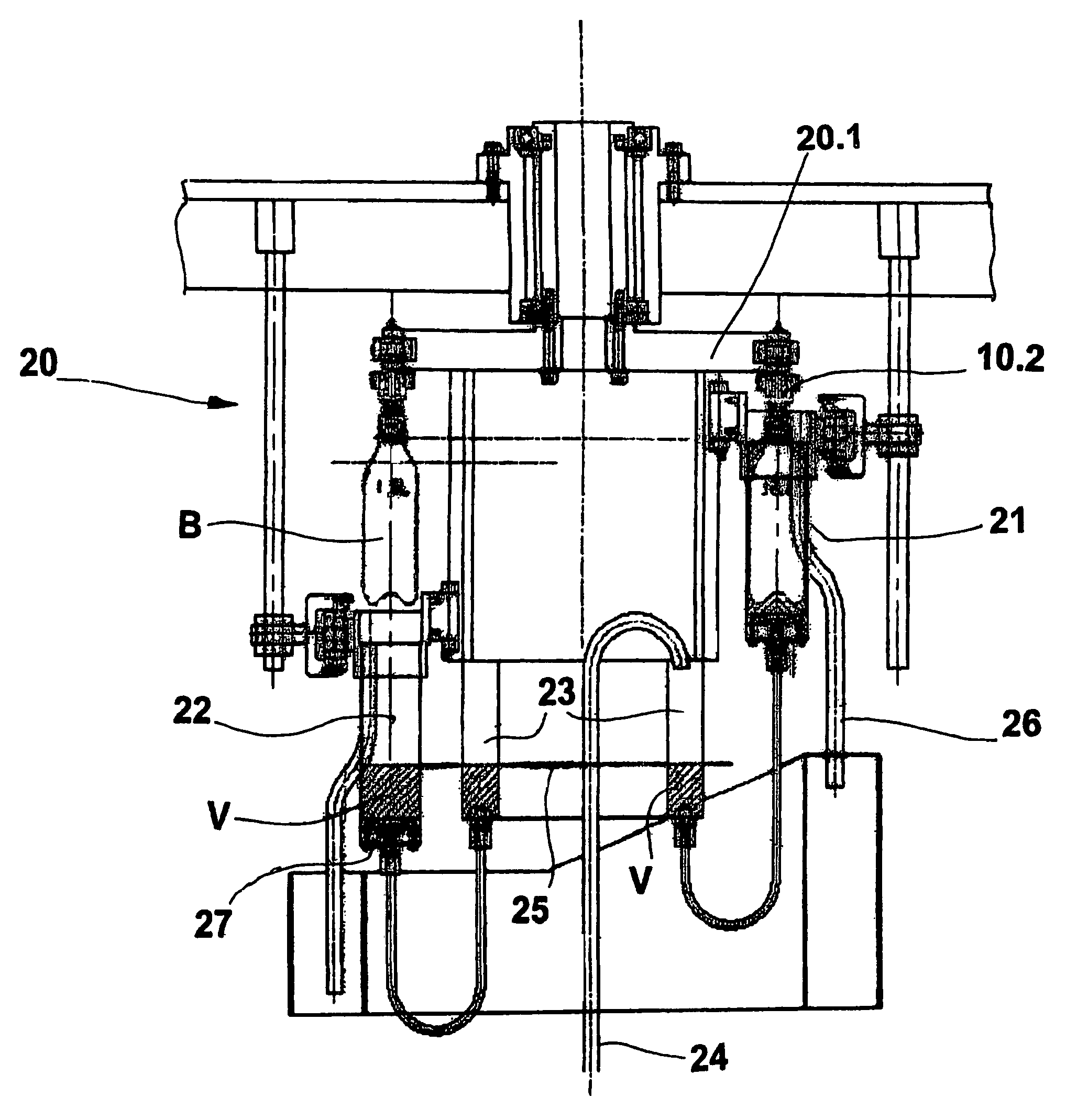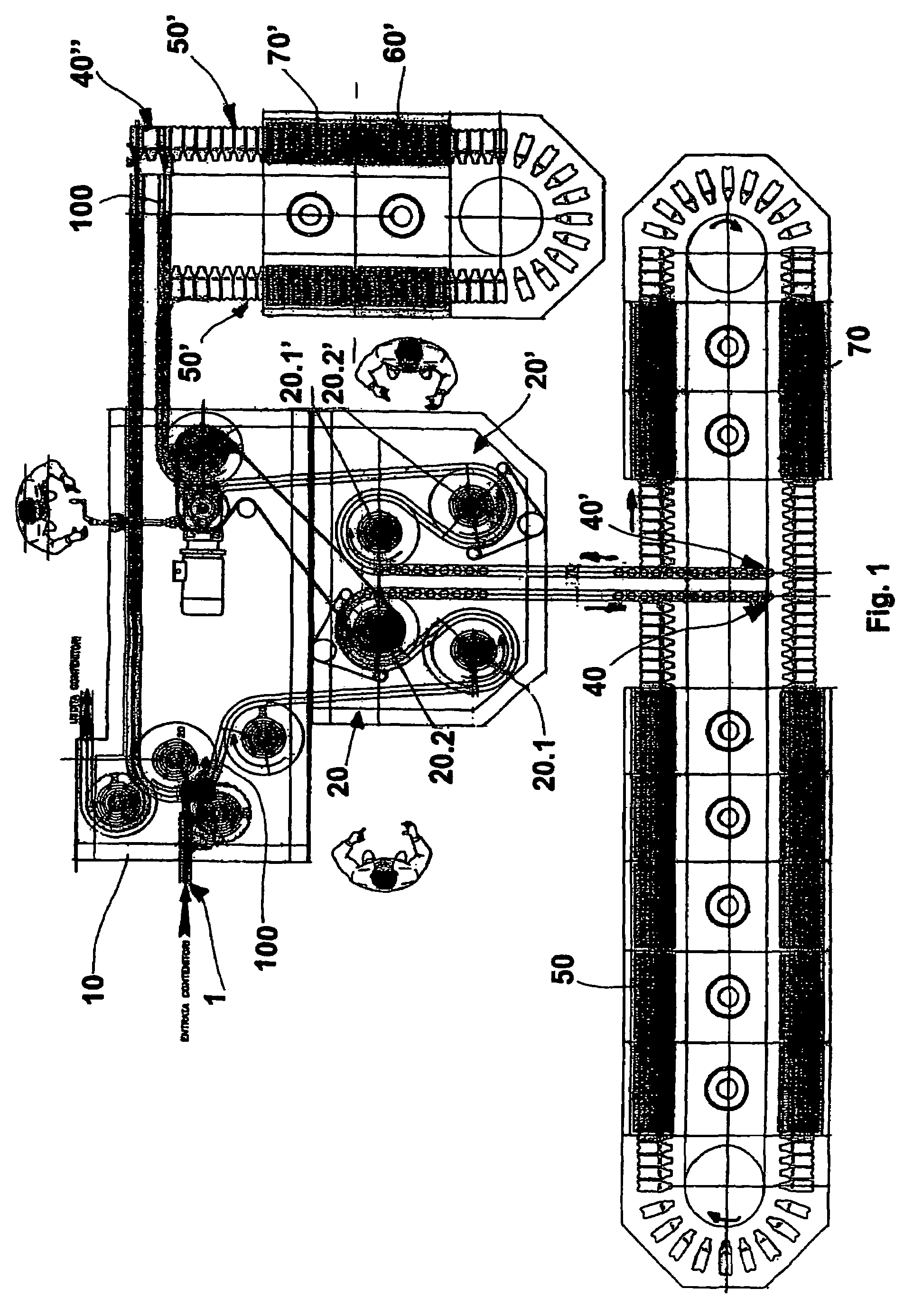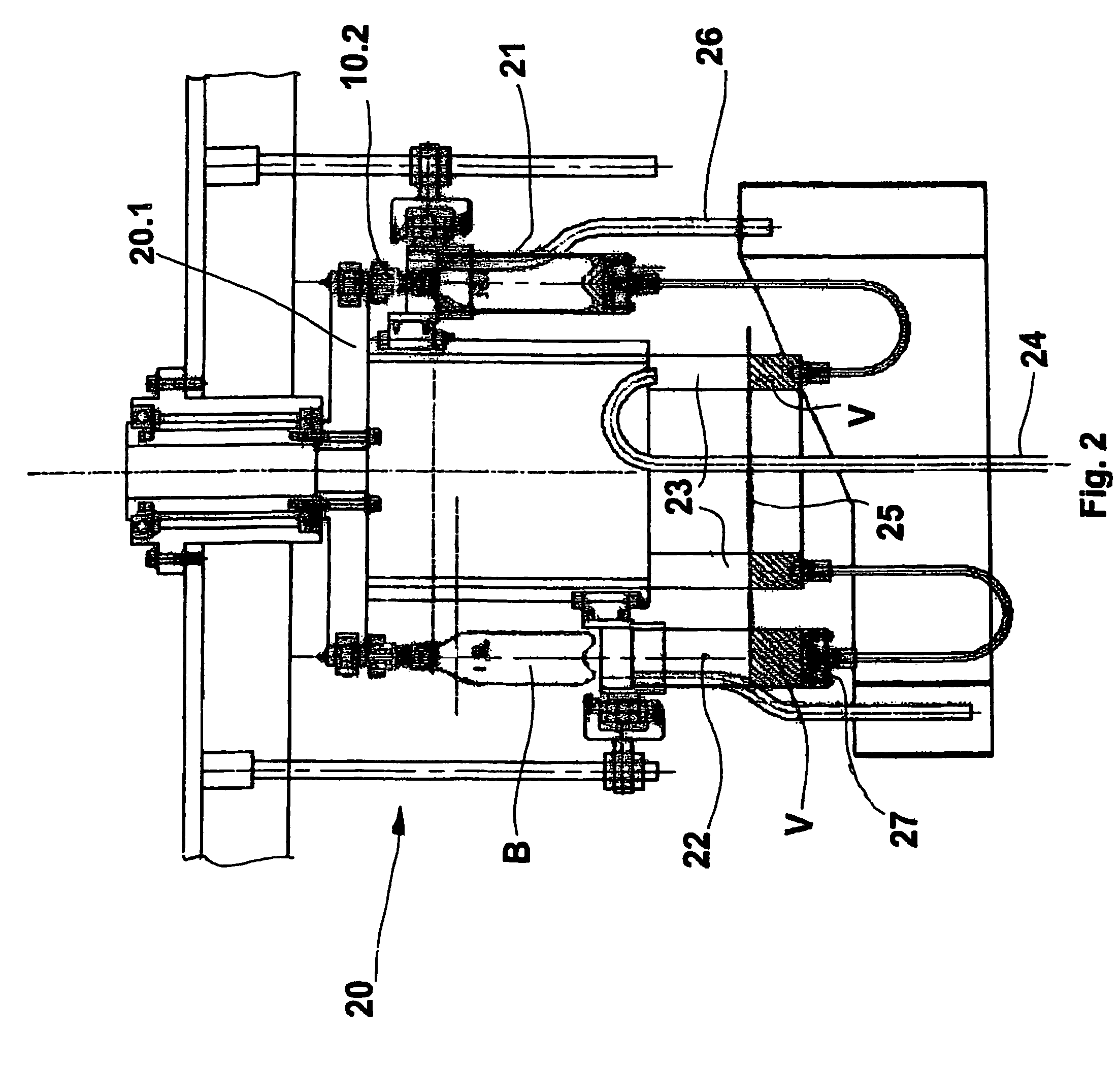Process and coating plant of containers
a container and coating technology, applied in the direction of liquid surface applicators, pretreatment surfaces, grain treatment, etc., can solve the problems of affecting the taste characteristics of the product, affecting the image of the drink manufacturer, and visible damage to the outer surface of the container, so as to achieve cost-effective construction and operation, high production capacity
- Summary
- Abstract
- Description
- Claims
- Application Information
AI Technical Summary
Benefits of technology
Problems solved by technology
Method used
Image
Examples
Embodiment Construction
[0018]In accordance with the invention, coating the external surface of containers, especially bottles, with a protective layer of resin involves sending containers to a coating plant, conveying the containers through the coating section of said plant where the containers are dipped into a coating solution, removing the containers from said solution, removing any excess coating solution from the surface of the bottles, removing the solvent of the solution from the coating, and solidifying and curing the resin of the coating. More specifically, this process consists of the following steps:[0019]Using a single bottle-transferring and conveying chain throughout the coating plant:[0020]Securing the bottles to said chain with specific grippers as soon as the bottles enter the coating plant;[0021]Moving said bottles, held vertically by the gripping devices of said chain, to a coating segment comprising many tanks containing the coating solution; said tanks can be moved according to the fe...
PUM
 Login to View More
Login to View More Abstract
Description
Claims
Application Information
 Login to View More
Login to View More - R&D
- Intellectual Property
- Life Sciences
- Materials
- Tech Scout
- Unparalleled Data Quality
- Higher Quality Content
- 60% Fewer Hallucinations
Browse by: Latest US Patents, China's latest patents, Technical Efficacy Thesaurus, Application Domain, Technology Topic, Popular Technical Reports.
© 2025 PatSnap. All rights reserved.Legal|Privacy policy|Modern Slavery Act Transparency Statement|Sitemap|About US| Contact US: help@patsnap.com



